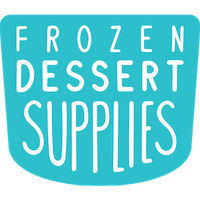The Ice Cream Making Process
It's creamy, delicious, and downright dreamy -- it's ice cream. But while 90% of households across the United States regularly indulge in this frozen yogurt supplies treat, few know exactly how ice cream takes its cold, delicious form. Want to know how ice cream is made? Read on to find out.
The Ingredients
First and foremost, let's talk about what ice cream is made of. In its most basic form, ice cream is a frozen blend of a sweetened cream mixture and air, along with the addition of added flavorings. In order to be considered ice cream, the mixture must contain at least 10% milkfat and at least 20% total milk solids.
- Reduced-fat: 25% less fat than the referenced ice cream
- Light: 50% less fat
- Low-fat: fewer than 3 grams of fat per serving
- Nonfat: as little fat as possible, no more than 0.5 grams per serving
Some ice cream mixtures contain egg yolks; if the content of the ice cream contains at least 1.4% egg yolks, it can be called custard or "French."
The Process
Now that you know what's in ice cream, it's time for the real question: how do air, sugar, and cream become the delicious treat we eat by the spoonful so often? The answer lies in a simple yet fascinating process.
- The Blend: The ingredients are blended for eight minutes.
- Pasteurization & Homogenization: A container of ice cream is submerged in 182-degree Fahrenheit water, effectively killing harmful bacteria. The mix is then forced under high pressure (around 2,000 pounds per square inch), which allows the fat particles from the cream to divide and emulsify. This step makes the ice cream smoother and creamier.
- Aging: The ice cream blend is aged at 40 degrees Fahrenheit for a minimum of four hours. Before or after this step, flavors or colors can be added.
- Freezing: A rotating barrel incorporates air into the ice cream mix. When air is added, it's called overrun and it contributes to the lightness or density of the ice cream. Up to 50% of the volume of the ice cream can be air that was incorporated during the freezing process.
Once the ice cream is made, it is packaged and cooled as quickly as possible, down to a holding temperature of less than -13 degrees Fahrenheit.
Talk about a sweet process!
When it's time to serve up your delectable frozen treats, make sure you're stocked with the best ice cream supplies, like eco-friendly ice cream cups, color-changing spoons, and custom-branded containers to showcase your brand.
Related Articles:
- Ten Facts About Ice Cream You Didn't Know Before
- The Sweet, Creamy, Dreamy History of Ice Cream
- Sweet Science: Make Your Own Ice Cream
- 5 Interesting Tidbits About Ice Cream: America's Favorite Dessert
- A Sweet History of Ice Cream
- The True Wonders of Vanilla Ice Cream
- The History of Ice Cream
- The History of the Most Common Ice Cream Flavors
- A Short History of Frozen Yogurt: How Did Your Favorite Frozen Treat Get to You?
- The Sweet, Sweet History of Gelato
- Ice Cream Preferences in the U.S.
- Ice Cream Around the World
- The Geography of Ice Cream
- The Divine and Delicious Art of Gelato
- Fun Facts About Ice Cream That Will Surprise You
- Ice Cream, Gelato, Gelati, and Custard: What's the Difference?
- Ice Cream Across the Nation: 4 Shops You Need to Visit in New York State
- Black History Month: The Father of Ice Cream





